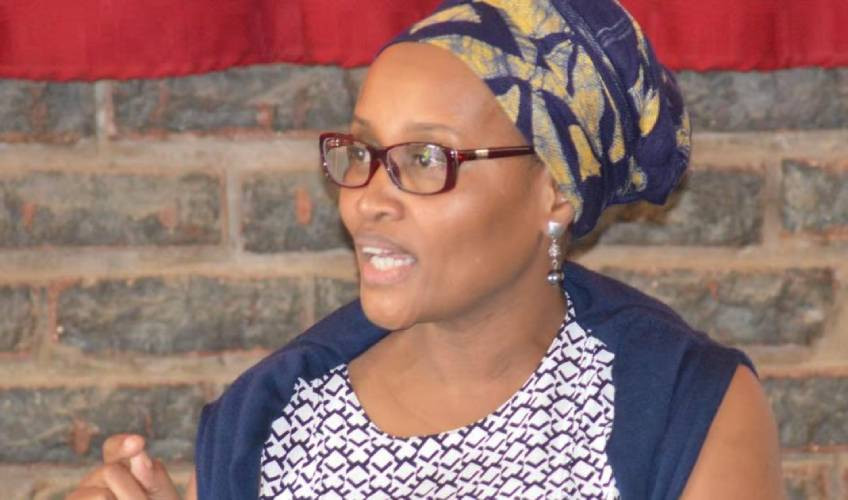Although women are slowly taking up influential managerial positions, many still shy away, leaving the men to dominate the boardrooms, writes NJOKI CHEGE
For many years, Kenyan women did not feature in elective, managerial or plum job appointments either because they did not belong to the ‘old boys’ network’ or did not have the right connections.
The patriarchal nature of the society has also played a major role in alienating women from leadership.
As a result, women have been largely under-represented in the decision making processes of the country, causing them to be marginalised yet they form the majority of the two genders.
A study by global consultancy company, McKinsey & Company, in 2007 found that companies with significant numbers of women in senior management did better on a range of criteria, including leadership, accountability and innovation.
In spite of this, many companies, even in developed countries, still have a meagre representation of women. In Europe, women represent a paltry 11 per cent of the governing bodies in listed companies.
Locally, the situation is worse, as women occupy only 44 out of the 462 seats on the boards of the 55 companies listed at the bourse, according to filings made to the Capital Markets Authority (CMA). This is a meagre nine per cent. Kenya is, in fact, doing far much worse than Uganda and Rwanda, with the latter registering more than 50 per cent of women in boardrooms.
Njeri Rionge, who has been a member and chair of several boards and committees, and is now a life coach and business mentor, attributes the women’s under-representation in boardrooms to the recruitment style, which is mostly done via the ‘old-boys’ network.
“Over a decade ago, best practices in corporate governance agreed to incorporate gender diversity, but sadly, this has not been matched by appropriate action,” Rionge says.
This disparity, she observes, poses the risk of boards missing vital aspects of leadership that have to do with social economics and people governance.
A comprehensive brochure published by McKinsely, dubbed ‘Women matter-gender diversity, a corporate performance driver’ notes that unless these disparities are addressed to the root, women under-representation in corporate leadership will not end, even for decades to come.
Felicity Biriri, the Chairperson of Federation of Women Entrepreneurs Association (Fewa) says this disparity in boardrooms boils down to power and control.
“After the promulgation of the Constitution, Kenyans thought the 30 per cent gender representation applied only in political positions, but it applies also in corporate governance,” she says.
Women have also been accused of contributing to their snail-paced upward mobility in the corporate world.
Plum appointments
The same McKinsely report notes that women shy away from what the report terms as the ‘anytime, anywhere’ performance model. Many women have the double-burden syndrome, where they are expected to balance work and domestic responsibilities of being the wife, the mother and the homemaker.
This double-burden syndrome is irreconcilable with the ‘anytime, anywhere’ performance model and many women in the corporate governance always have to know how they will balance family and work.
Many women today would rather forfeit plum appointments for fear that their family responsibilities may suffer in the process.
How can this be sorted out?
Biriri says there is a great need for gender mainstreaming, which starts from the political system and in turn trickles down to the corporate world.
Stay informed. Subscribe to our newsletter
While it may not be obvious to many, political goodwill is extremely important in solving this disparity.
Says Biriri: “Corporate governance has always and will always be intertwined with political influence. Most of these boards are parastatals and appointments heavily rely on political influence. Political goodwill and commitment to gender mainstreaming is, therefore, vital in solving this issue.”
Women have also been challenged to come out strongly to claim their slots in the boardroom by putting their credentials out there and applying for the advertised posts. There is also need to create a database of competent women where governments and companies can refer to when making appointments to the boards.
The CMA has also proposed a law to enforce measures aimed at ensuring women fill a proportion of seats on the boards.
According to CMA, a bias towards the quota system in appointment of directors would break male domination of the boardroom.
This law, if passed, is set to bring far-reaching changes in corporate Kenya.
Of the 55 firms listed at the Nairobi Securities Exchange (NSE), more than 23 have no women directors and those with female board members are majority-owned by multinationals.
At the moment, only Kenya-RE, one of the 55 firms listed at the NSE, has a woman at its helm — Nelius Kariuki, who was appointed in 2007.
Only two women — Maria Msiska (BOC Kenya) and Nasim Devji (DTB Bank) — are CEOs in publicly listed companies. Kenya-RE had a woman CEO, Eunice Mbogo, until 2010, when Jadiah Mwarania replaced her.
Companies in the commercial and agriculture sectors have male-dominated boards unlike those in the financial sector. Firms with women-friendly boards include Safaricom and KenGen, which have four women each. Barclays Bank, Standard Chartered Bank, Nation Media Group and East African Breweries Limited have three women each.
While the use of quota system will guarantee fair playing ground for both sexes, it is bound to generate debate, with some opining that board seats should be based on merit.
 The Standard Group Plc is a
multi-media organization with investments in media platforms spanning newspaper
print operations, television, radio broadcasting, digital and online services. The
Standard Group is recognized as a leading multi-media house in Kenya with a key
influence in matters of national and international interest.
The Standard Group Plc is a
multi-media organization with investments in media platforms spanning newspaper
print operations, television, radio broadcasting, digital and online services. The
Standard Group is recognized as a leading multi-media house in Kenya with a key
influence in matters of national and international interest.
 The Standard Group Plc is a
multi-media organization with investments in media platforms spanning newspaper
print operations, television, radio broadcasting, digital and online services. The
Standard Group is recognized as a leading multi-media house in Kenya with a key
influence in matters of national and international interest.
The Standard Group Plc is a
multi-media organization with investments in media platforms spanning newspaper
print operations, television, radio broadcasting, digital and online services. The
Standard Group is recognized as a leading multi-media house in Kenya with a key
influence in matters of national and international interest.






